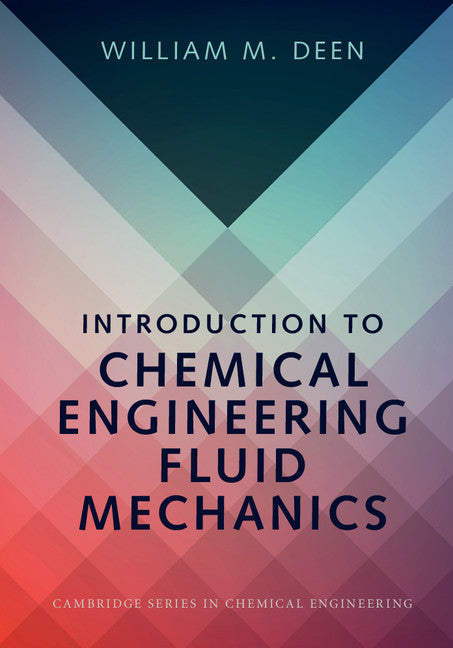Freshly Printed - allow 4 days lead
Couldn't load pickup availability
Introduction to Chemical Engineering Fluid Mechanics
Presents the fundamentals of chemical engineering fluid mechanics with an emphasis on valid and practical approximations in modeling.
William M. Deen (Author)
9781107123779, Cambridge University Press
Hardback, published 15 August 2016
411 pages, 192 b/w illus. 24 tables
25.4 x 18 x 2.3 cm, 1 kg
'It is very well written, the explanations are clear and detailed, and it contains numerous original 'real-world' examples and problems.' Andreas Acrivos, Stanford University, California
Designed for introductory undergraduate courses in fluid mechanics for chemical engineers, this stand-alone textbook illustrates the fundamental concepts and analytical strategies in a rigorous and systematic, yet mathematically accessible manner. Using both traditional and novel applications, it examines key topics such as viscous stresses, surface tension, and the microscopic analysis of incompressible flows which enables students to understand what is important physically in a novel situation and how to use such insights in modeling. The many modern worked examples and end-of-chapter problems provide calculation practice, build confidence in analyzing physical systems, and help develop engineering judgment. The book also features a self-contained summary of the mathematics needed to understand vectors and tensors, and explains solution methods for partial differential equations. Including a full solutions manual for instructors available at www.cambridge.org/deen, this balanced textbook is the ideal resource for a one-semester course.
Preface
Table of contents
Lists of symbols
Part I. Use of Experimental Data: 1. Properties, dimensions, and scales
2. Pipe flow: friction factor and pressure drop
3. Drag, particles, and porous media
Part II. Fundamentals of Fluid Dynamics: 4. Fluid statics: pressure, gravity, and surface tension
5. Fluid kinematics
6. Stress and momentum
Part III. Microscopic Analysis: 7. Unidirectional flow
8. Approximations for viscous flows
9. Laminar flow with inertia
10. Turbulent flow
Part IV. Macroscopic Analysis
11. Macroscopic balances for mass, momentum, and energy
12. Pipe flow: entrance effects, fittings, and compressibility
Appendix A. Vectors, tensors, and coordinate systems.
Subject Areas: Mechanics of fluids [TGMF], Mechanics of solids [TGMD], Engineering thermodynamics [TGMB], Chemical engineering [TDCB], Biochemical engineering [TC]


